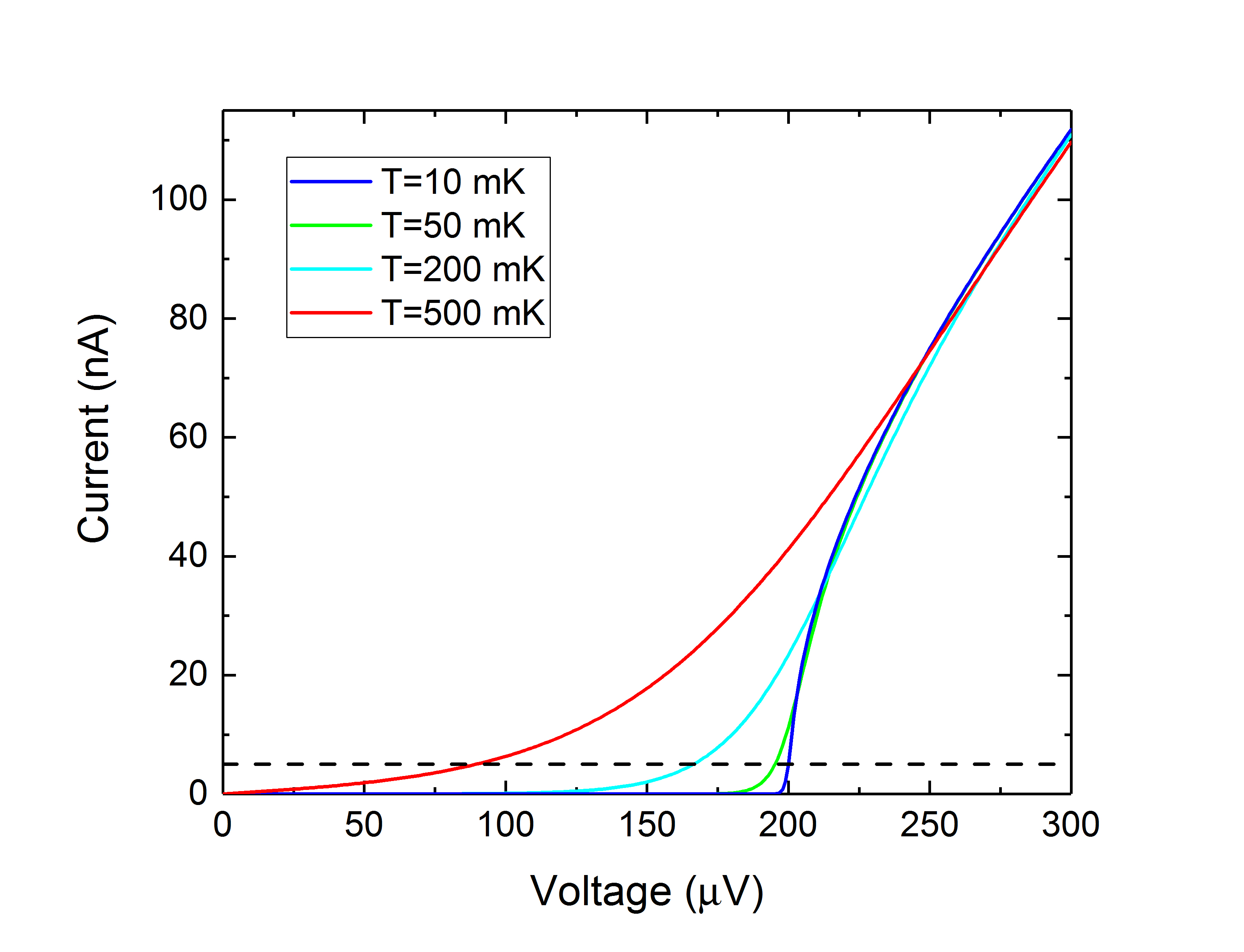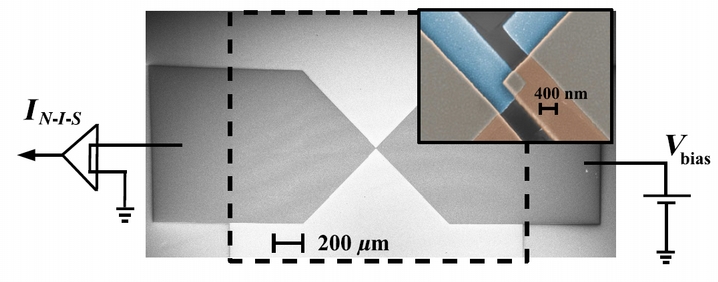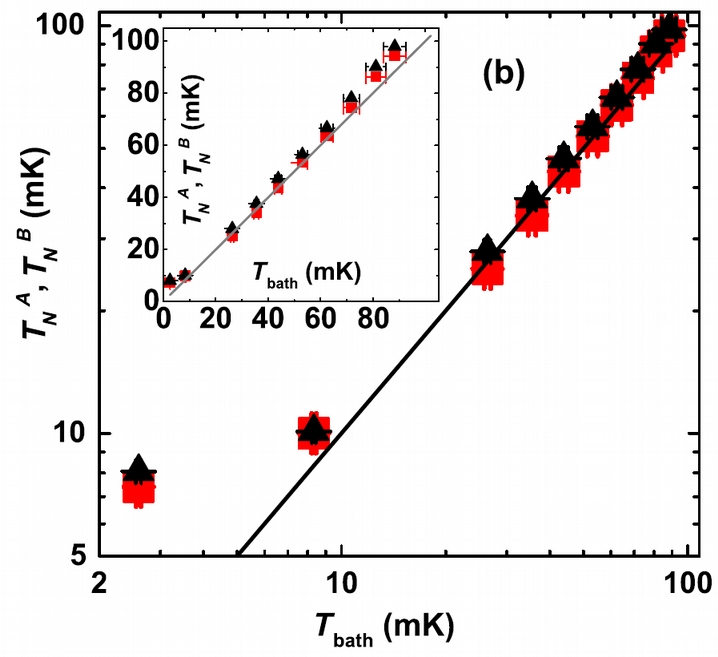The current through a tunnel junction between normal metal and superconductor (NIS junction) is given by the integral

Here R is the resistance of the junction, TN is the temperature of the normal lead, and Δ is the energy gap in the superconductor. This current-voltage characteristics is plotted in the left panel of Fig. 1 for several values of the temperature. In the right panel of Fig. 1 we plot voltage versus temperature at fixed bias current. The dependence V(t) turns out to be almost linear in certain temperature range below Δ/kB, and in this range the NIS junctions can operate as thermometer.


Figure 1. Left panel: current voltage characteristics of a NIS tunnel junction with the parameters typical for the junctions between aluminum and copper, R=2 kΩ, Δ=200 μeV. Right panel: voltage vesus temperature at fixed bias current I=5 nA, which is indicated by dashed line in the left panel.
NIS junctions have small size and they can be easily fabricated by oxidizing superconducting aluminum. That is why NIS thermometers are widely used in our laboratory and elsewhere. The sensitivity of an NIS thermometer at very low temperatures is limited by two factors: overheating of the leads and poor quality of the aluminum oxide tunnel barrier. Our group has achieved significant progress in fighting both these limitations [1]. We reduce the heating of the leads by increasing their volume (see Fig. 2) and improve barrier quality by fine-tuning the fabrication. In this way we have achieved reliable operation of the thermometer at temperatures as low as 7 mK. It opens up a possiblity of big improvement in sensitivity of radiation detectors since the latter quickly grows at low temperatures.


Figure 2. Left panel: a scanning-electron micrograph of the NIS device together with a schematic of the experimental setup. Right panel: temperatures extracted from the fits of the junction current-voltage characteristics by two methods versus bath temperature.
[1] A. V. Feshchenko, L. Casparis, I. M. Khaymovich, D. Maradan, O.-P. Saira, M. Palma, M. Meschke, J. P. Pekola, and D. M. Zumbühl.
Tunnel-Junction Thermometry Down to Millikelvin Temperatures, Phys. Rev. Appl. 4, 034001 (2015).